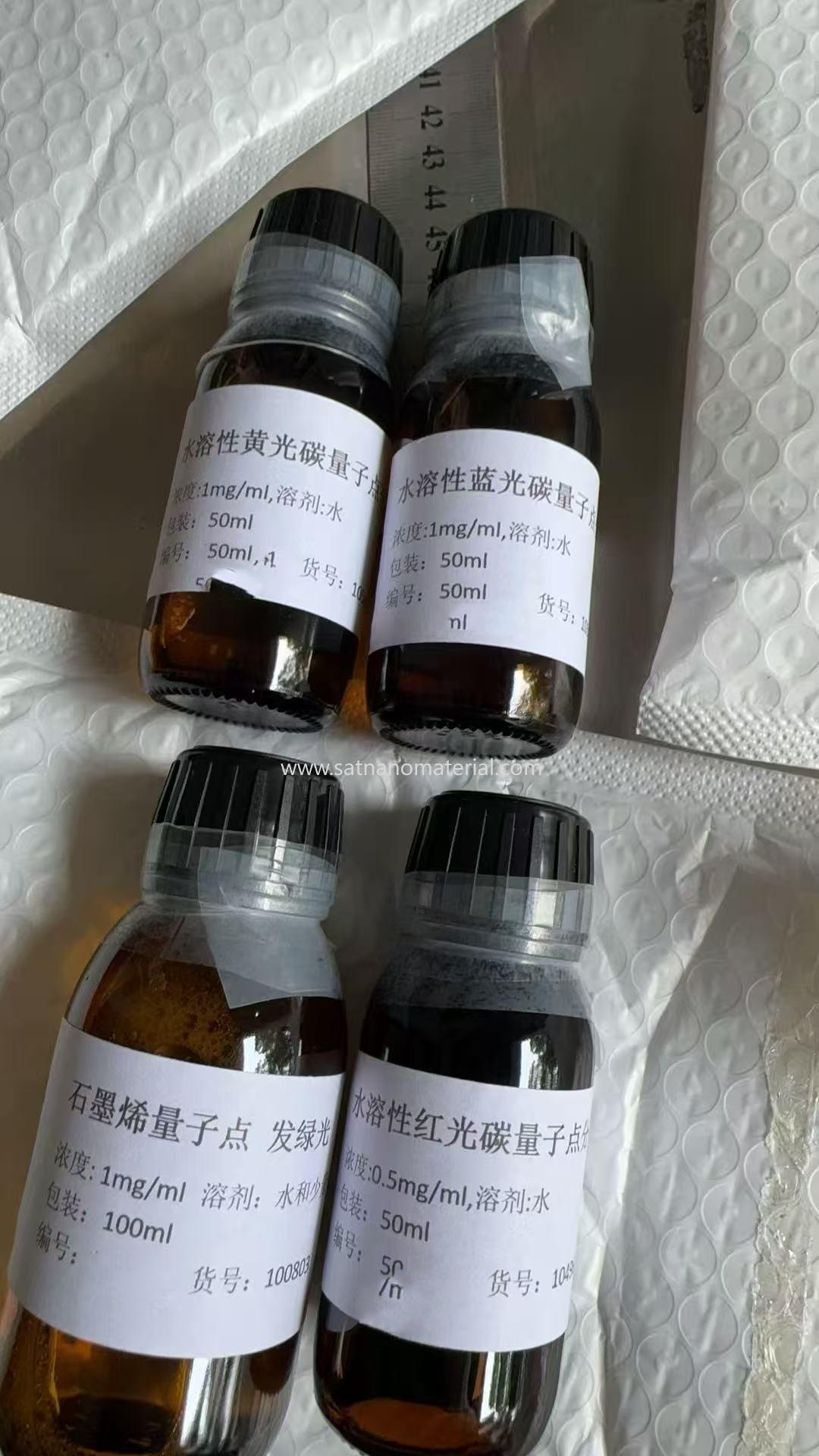What is graphene quantum dot
Graphene has a wide range of application prospects, but due to its zero bandgap characteristics, low dispersion in water, and low spectral absorption, it cannot be applied in many fields such as optoelectronics, biological imaging, and semiconductors. Therefore, preparing graphene quantum dots (GQDs) is an effective method for adjusting the bandgap of graphene and applying it to nanodevices.
When the lateral size of graphene flakes decreases to the nanoscale, they become GQDs, zero dimensional (0D) materials composed of graphene flakes with no more than five layers. Most GQDs are circular or elliptical in shape, although there are also points in triangles and hexagons.
 Graphene quantum dots (GQDs) vs graphene
Graphene quantum dots (GQDs) vs graphene
The size dependent opening of energy bands in GQDs due to quantum confinement effect is one of the significant differences in the clear boundary between GQDs and graphene, and the band width increases with the decrease of quantum dot size. Most GQDs have band gaps between 2.2 and 3.1 eV and exhibit green or blue fluorescence.
Research has found that compared to graphene, GQDs have a very large specific surface area and extremely small size, and their edges can accommodate more active sites (such as functional groups, dopants, etc.), making them easier to disperse in water. At the same time, it also has other significant characteristics such as low toxicity, good biocompatibility, chemical stability, stable photoluminescence, and broad spectral range of fluorescence emission. Due to these unique properties, GQDs are considered an advanced multifunctional material with a wide range of applications, including cancer treatment, solar cells, biosensors, LEDs, and photodetectors.
The synthesis of GQD can be divided into two categories: top-down approach and bottom-up approach preparation techniques.
Top down synthesis method of graphene quantum dots
Using block shaped graphitized carbon materials (such as MWCNTs, graphene, graphite, graphene oxide, coal, etc.) as precursors. The carbon precursor will be stripped off during the reaction process and cut into the desired GQDs through chemical, thermal, or physical processes. The top-down synthesis process utilizes techniques such as oxidation/reduction cutting, pulsed laser ablation (PLA), and electrochemical cutting.
The synthesis of graphene quantum dots using reducing/oxidizing cutting techniques mainly involves using strong reducing or oxidizing agents as scissors to cut oxidized graphene or graphene sheets. However, this process is often described as requiring the use of toxic chemicals and extensive purification steps; However, there are also some exceptions where environmentally safe oxidants such as H2O2 can be used, and the yield can reach over 77% without any purification.
The results indicate that applying an electric potential during electrochemical cutting can cause charged ions to enter the graphite layer of the precursor. For example, researchers reported the synthesis of GQDs with an average size of 2-3 nanometers using a simple electrochemical exfoliation device, which consists of two graphite rods as electrodes and citric acid and sodium hydroxide in water as electrolytes. This method also has excellent functionalization and doping ability for GQDs.
Another interesting top-down synthesis method is the PLA method, which uses a focused laser beam to synthesize GQDs from graphite flakes as raw materials. This technology does not require strong acidic chemicals, providing a feasible and environmentally friendly approach for the research of GQDs. This method can be used to synthesize GQDs of uniform size.
Bottom up synthesis method of graphene quantum dots
The bottom-up approach, rather than the top-down approach, involves fusing smaller precursor molecules (such as citric acid, glucose, etc.) to obtain GQDs. Compared with top-down strategies, bottom-up methods have the advantages of fewer defects and adjustable size and morphology. The most famous bottom-up synthesis route is through microwave-assisted and water bath heating, gradually carrying out organic synthesis and preparation of soft templates.
A typical case is that citric acid and amino acids have been reported to be synthesized into GQD through hydrothermal method. In this technology, citric acid is prepared by loading the precursor into an autoclave and subjecting it to a hydrothermal reaction at a specific time and temperature. This technique simplifies the process of introducing heteroatoms such as sulfur and nitrogen into GQD structures. For example, there are reports that the size of nitrogen doped GQDs (N-GQDs) using citric acid and ethylenediamine is 5-10 nanometers.
The hydrothermal process usually takes several hours, which makes it unsuitable for synthesizing GQD on an industrial scale. The use of microwave-assisted heating is a relatively complete remedial measure. By using microwave heating method, the time required for GQDs growth can be shortened to a few minutes or even seconds.
At present, the yield of existing top-down or bottom-up GQD synthesis methods is mostly below 30%, and these methods also require expensive and time-consuming purification operations, which greatly increases the final cost of GQDs. Therefore, future research directions should focus on improving yield and simplifying purification processes, so that the industrial application of GQDs can have higher economic benefits
SAT NANO is one of best supplier of graphene quantum dots and graphene in China, if you have any enquiry, please feel free to contact us at admin@satnano.com

 online service
online service 13929258449
13929258449 admin@satnano.com
admin@satnano.com + 8613929258449
+ 8613929258449